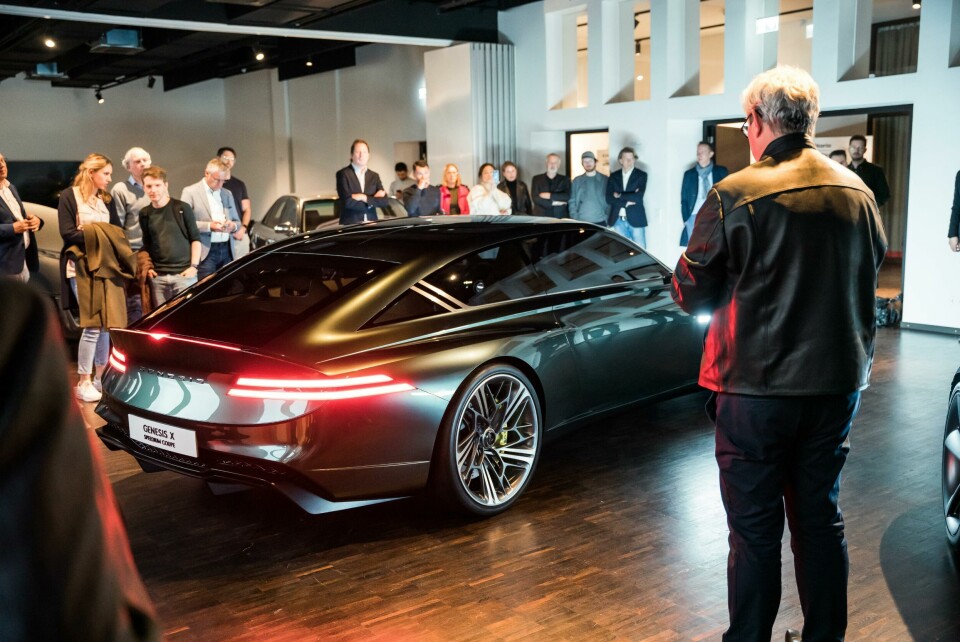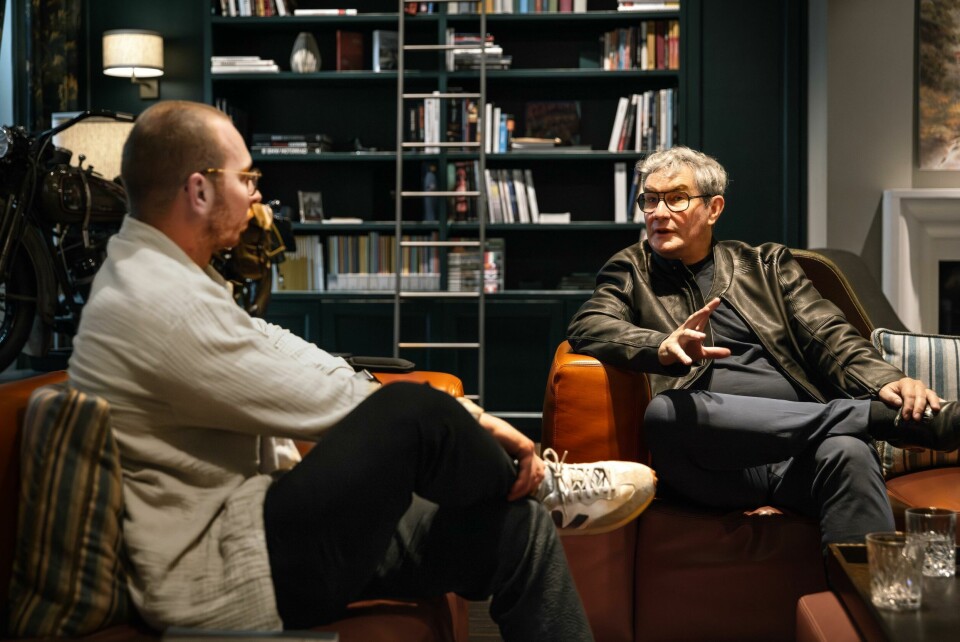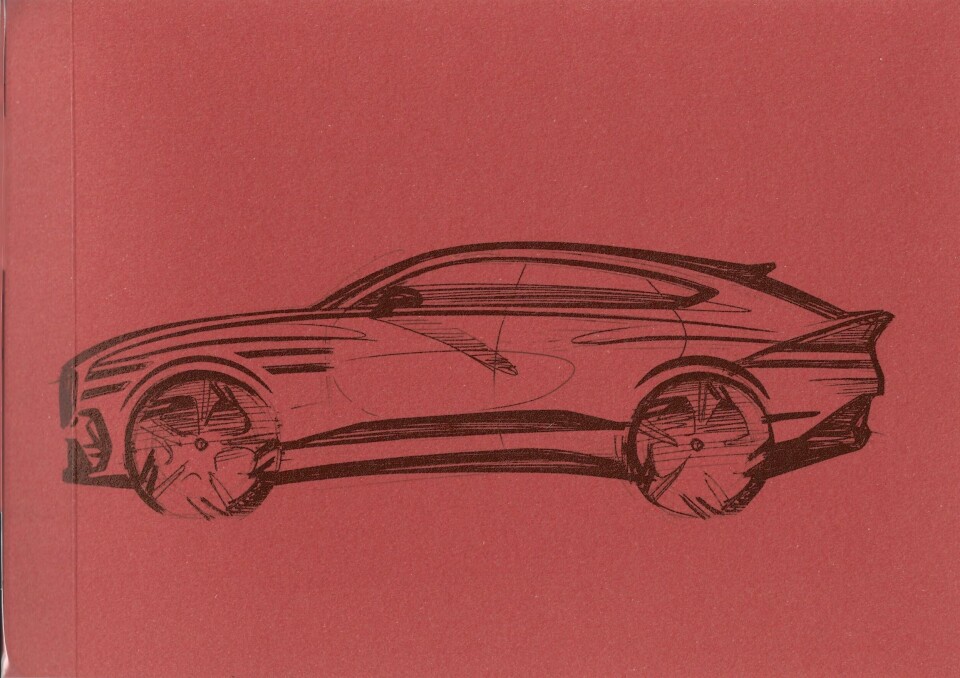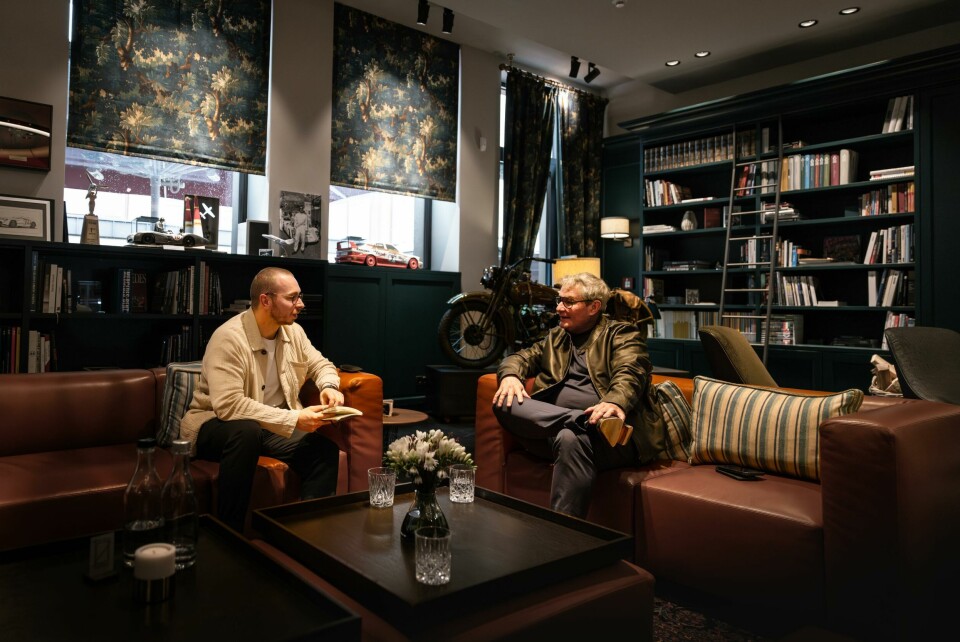
Luc Donckerwolke: Trust in design has pushed Hyundai Motor Group forward
Car Design News sat down with Hyundai design boss Luc Donckerwolke to discuss the GV80 Coupe concept and his transition into the C-suite
It has not been long since Luc Donckerwolke was promoted to the upper echelons of Hyundai management, taking on the role of Group president toward the end of 2022 in a step that seemed both inevitable and indicative of the organisation’s respect for design.
Design directors often talk about the transition into leadership roles as more of a “people management” position, and less of a hands-on activity. While Donckerwolke has certainly shouldered more responsibility in terms of management, strategy and communications, he tells Car Design News that he is still very much active with the pencil. Speaking ahead of the inaugural Car Design Event and not long after a flight from Seoul to Munich, the design veteran spoke about the GV80 Coupe concept, overseeing multiple brands and how to play as part of a team.
Car Design News: What is your view on the importance of design at a senior management level – what can that kind of trust in design bring to a brand?
Luc Donckerwolke: I’ve worked in a lot of companies where design is controlled by people that don’t know much about design. The reason why I left Europe seven years ago for Hyundai is because I met a visionary who was not telling me about design, but about visions. I realised I was speaking with somebody that was really thinking about the future. He explained that he wasn’t going to hire a designer and tell them what to do. It was, “You’re the designer, you do it.”
When I present designs every month, in 48 hours he is going to ask for a recommendation – and he’s always going to take the most challenging proposal. Not the most conservative, nor the easiest to sell. He is thinking about what customers need in the future, not just today. This is why I decided to change my career plans to go where there was trust given to design. I was allowed to take more responsibility in design, to support it. I am doing more than design today, but it’s all in order to support design.

I’m still a designer and although people say “Hey, you’re president now!” I say no, I’m still a designer. I do have this level of responsibility but I’m still being hands on. I’m not going to be reading and commenting on reports that I receive. I am still active.
The day I am unable to play, I will change jobs
CDN: So it hasn’t required you to step back from sketching and getting your hands dirty?
LD: Not at all. Yes, obviously I do much more than that, but I am still involved in the design of each project. Some models more than others, obviously, especially the ones that are supposed to have a change of direction. I’ve got a great team of designers, so I’m not on the bat the whole time but I do tend to play with them quite a lot. The day I am unable to play, I will change jobs.

CDN: You have Karim Habib with Kia; SangYup Lee and Simon Loasby with Hyundai; and Yoon Il-hoon at Genesis. What does the relationship between you and those other design leaders look like?
LD: In the last seven years, I have had the chance to build a great design team. We established from the very beginning that in the design studio we are designers; it doesn’t matter if I’m talking to SangYup or I’m talking about a young designer. When I arrived in Korea I was “Senior Vice President Donckerwolke”, and they had to address me like that. I said no, I’m Luc and that’s it. It’s eye-to-eye in design. I can steer, discuss, argue and give my recommendation as projects are running. Now if SangYup Lee is in Shanghai, I don’t mind if it’s Simon Loasby or somebody else is talking to me about the project. This is not a problem – we are all friends. I built this team around people I would like to hang out with if we were not working together.
CDN: You’ve effectively been able to build your own dream team…
LD: SangYup and I have been working together for almost 20 years. I took him to Bentley when I needed a chief exterior designer, then when he coached me for my interviews in Korea, I told him, “you’re coming with me.”
Il-hoon is someone that I stole from Gorden Wagener, and at that time he was working on the S-Class Coupe and cars like the SLR. I took him from Mercedes to Bentley, and then from Bentley to Korea to take over Genesis. These are just a couple of examples, there are many more. Whether they are in Europe, California or Korea, I basically get my friends together, my gang. I trust them. Sometimes I have to say that I don’t agree, but if you’re friends, you can say that. It’s all about an interaction, about me supporting but, at the same time, steering.
Most importantly, I need to make sure of one thing; that Hyundai, Kia and Genesis are differentiated in terms of their design DNA and the strategy of their models. The EV9 for instance is completely different to what you have seen from Hyundai and Genesis. The EV6 was different to the Ioniq 5 or GV60. This is one of my big tasks, to make sure that we always keep models and brands apart. Differentiation is my main task.
CDN: My taxi over here was a Hyundai Staria. I was waiting around for a while, and all of a sudden I see the Parametric Pixel design – it just stands out straightaway.
LD: Exactly. Or you could have seen the Seamless Horizon design. Those are the elements that we want to stand out. Kia has a different way – called Star-Map – in the lights, which is a precise orchestration of elements. You still recognise that from afar because it’s completely different to what you see on other brands, but at the same time, it’s different to what you see at Hyundai.
Sometimes I need to play the silverback gorilla, but this happens less and less because of the trust in design at the company
CDN: You’re in the C-suite now but you’ve had various steps on the way up the ladder. How have your day-to-day activities evolved?
LD: To be honest, almost every day tends to be different. I have two types of occupations. One is the brand side, where I’m taking care of events and talking about the brand through design. The other one is the active design phase, where I’m there to give input. That is done by either sitting with the designers, or sketching as an impulse for a project. Sometimes it’s about sitting with the person doing the data and suggesting a change to the angle of the belt line or moving the A-pillar. The worst thing you can do is to pull the designer away and say “let me do it.” That is not my role, I have to play within a team.
CDN: Creatives certainly don’t respond well to micro-management…
LD: No. Sometimes there are things I’m not sure about, and that’s a conversation, and other times it becomes clear that it was good to let them lead. I really don’t see myself as a manager. I basically use the trust that is given me to support design, and to give all the power it needs. Sometimes I need to play the silverback gorilla and be a bit louder – to mark your territory – but honestly this happens less and less because there is so much trust in design at the company. They have realised that the Hyundai Motor Group, which was known as just being “value for money”, has evolved into an emotional option on the shopping list. That change has come as a result of the trust that has been given to design.
CDN: The GV80 Coupe concept is just behind us. How much of a concept is it, because it looks quite close to production?
LD: To be honest, it has bigger wheels and some carbon elements, but it is pretty much there. Put it this way, we don’t make a show car with a soft closure on the doors. I don’t like to do showbusiness. A key reason why we do concept cars is to communicate the design language, and it’s easier to do that on a car which is simple, because those new elements resonate more. For instance, the parabolic anti-wedge character, the ducktail, the concave back end which is also a typical Genesis DNA element, the quad lights, the fluid silhouette with the long bonnet and relatively short front overhang.

CDN: What other motivations are there behind a show car for you?
LD: I like to do show cars sometimes to force something in the company, even if it’s not official, because the resonance helps you to push something after that. It is a GV80 Coupe, but it stands for something else as well: high performance. We have been doing business sedans and SUVs but we have been always hinted at the fact we want more emotional cars. This car has a few elements which are going to be used for high-performance vehicles that are around the corner – to put a bit more spice into Genesis. We want to emotionalise the products so they are fun to drive and fun to look at. We have already made a business of cars that are elegant but kind of behaving; now it’s time to misbehave.
CDN: If you were looking to make a statement, you really could have picked a brighter colour…
LD: It’s funny, because we also considered doing yellow or green, but other brands had done that and they felt a bit flat. But with performance blue at Hyundai and this bright orange at Genesis, it’s basically the Gulf racing livery – a nice nod to racing heritage.













